From her studio in downtown Bristol, Virgina-based artist Suzanne Stryk creates work that offers a thought-provoking look at the ways humans understand the natural world. In the following interview, Stryk offers her thoughts and explanations on the inspiration behind her own work, her favorite Virginia landmarks, and the marriage between art and science.
“Like the enigmatic Rosetta Stone, Stryk’s beautiful mixed media panels invite close investigation, beckoning decipherment of a personal iconography . . . . She is as much a sculptor as a painter, teasing fibers from a bird’s nest to render them tactile or scratching notations into her gesso that are part science, part poetry, and all obsession.” Leah Stoddard, Director Second Street Gallery, Charlottesville, VA
“Although the work raises questions about diversity and extinction, the artist remains a mute, studious observer. But Stryk also engages in fanciful still-life constructions . . . these gently startling manipulations recall the subdued surrealism of Max Ernst . . ..” Susan W. Knowles, Art Papers
“Stryk’s show at the Fernbank Museum of Natural History, “The Collector’s Confession,” suggests the dialogue between art and science that goes on in the mind of most collectors of natural objects . . . .” Jerry Collum, Atlanta Journal Constitution
SHENANDOAH: We’ve noticed that one of your primary focuses in your work is birds. Is there a particular reason for this?
SUZANNE STRYK: Well, watching birds as a child was the moment my heart first opened to the natural world. It might be that I’m always striving to recapture that sensation in my art.
But, you know, my bird imagery — wings, eggs, feathers, nests, along with the bird image itself — suggests both avian life and human analogies. Take the nest. I have a quote tacked onto my studio wall by the French philosopher Gaston Bachelard: “A nest is a precarious thing, yet it sets us to daydreaming about security.” I tap into this paradox with my nest images. Which is to say they’re 100% about nests and 100% about how we interpret them.
“Vacancies”
SHENANDOAH: Do you have a favorite type of bird?
STRYK: Favorite bird? Hmmm, that’s a hard one. Because it probably changes with each day, or even hour! Certainly one of my favorites is the wood thrush. And you know I rarely see them, only hear their flute-like song from the forest canopy above my house. They appear one day in the spring — leave again in the late summer for South America. Can you imagine that such a delicate bird migrates so far? Up close, thrush feathers are astonishing — all those ivories, browns, and rusty spots.
SHENANDOAH: It’s refreshing to see such natural images in your artwork. Why do you focus only on the natural world and avoid human subjects and manmade objects?
STRYK: It only seems that I avoid human subjects and manmade objects. My art work itself is manmade, and the subject of my work is not the natural world, alone, but how we humans look at the natural world. There’s a difference. I’m not painting what animals naturally look like in their habitat. Take for example my painting “Five Ways of Looking at a Goldfinch.” You see the spontaneous sketch of the bird, the detailed painted bird, the shadow of the bird, the genome of the bird, and a vortex painted with the colors of the goldfinch. And where’s the real finch? Not there. The goldfinch itself, its presence, is elusive. The five ways of seeing the bird are subjective interpretations. Do you follow what I’m saying? We could sequence its entire genome or precisely paint it, but goldfinch-ness remains a mystery. Yet our attempt to understand — that’s amazing!
SHENANDOAH: People usually view art and science as very separate fields. How do you see them coming together, and why do you think that this synthesis is important?
STRYK: You know, every day scientists discover more amazing facts about the natural world. But from that objective scientific data artists can create myth or reveal mystery. From sheer biological information artists might see symbolic truths about life, or uncertainty, or wonder. Artistic interpretations of science, in other words, return the natural world back into the human imagination.
And the synthesis of science and art is all the more important in our age. The way I see it, the underlying reason for environmental problems — climate change, mountain top removal, slaughter of endangered animals — is because nature’s been objectified into a monetary value. You know what I just said about science revealing amazing facts and art’s capacity to bring those facts into the human imagination? They’re both essential to protect nature from being reduced to dollars.
SHENANDOAH: Have you always been passionate about art and science?
STRYK: Yes. Marrying those two have been my mission in life. I may have many doubts, but why we’re here is not one of them. We’re here to witness the whole array of life on this planet, including what our own species gets up to — which may be wonderful, or might be quite disturbing and destructive. We’re here to shout “hallelujah, amen,” or “damn” and “amen” again, about what we observe happening on this planet we inhabit.
SHENANDOAH: When did you first define yourself as an artist?
STRYK: When on my first federal income tax form I wrote “artist” for the occupation! No really, that’s a hard question to answer. Probably when I was a naive art student in the early 70s it was easier to call myself an artist. That is, before I knew what it took to develop personal voice, or sustain visual and conceptual ideas. Later, I became more fully aware of the difficulty of mastering not only materials and techniques, but also the challenge of exploring ideas deeply enough to be sustained. And when learning more about the rich accomplishment of artists in the past, I became more reluctant to call myself an “artist.” It seemed a title that claimed some kind of inspired authority. Let others determine that.
Just a little aside, here. You might find it funny, but one reason I like living in blue-collar Bristol is that when I walk to my downtown studio I’m surrounded by all sorts of workers: shop owners, business people, office managers, city workers, hairdressers, and so on, and feel just one of them. I’m working at my task just as they are. In my daily life, I truly consider myself a worker. A maker of images.
SHENANDOAH: Is there any moment or event that occurred in your life that pushed you towards your pursuit of art?
STRYK: There was such a moment when I worked as a scientific illustrator in the early 80s. It happened in my windowless lab room, drawing a snapping turtle skull on the stainless steel counter. I was sucked into its eye sockets as I drew, wondered how it once saw the world from the muddy bottom of a pond. I was struck by the limitations of my careful drawing, of what it missed about the dark primeval creature’s life. You know, there were certain things I loved about scientific illustration. The process is remarkably egoless and intense — I liked that. But I knew then it would never entirely fulfill my desire to explore the mysteries beneath the surface of the natural world.
SHENANDOAH: Could you explain more about your series of Thomas Jefferson- inspired pieces? What about the ecologically distinct regions of Virginia inspire you? Did you have a favorite region to paint?
STRYK: Jefferson’s book Notes on the State of Virginia was the springboard for my own artistic exploration of the state. While I began by visiting his old haunts, such as Natural Bridge, most of the pieces in my series are about places of my own choosing. I could say so much about this work! I recommend that interested readers watch an 8-minute video uploaded on You Tube by the Taubman Museum of Art, where my “Notes on the State of Virginia” series was first shown last summer. That’ll give a better sense of it than what I could do here quickly. [https://www.youtube.com/watch?v=wc3StD99X-g]
But in response to your question, art for me is a way of experiencing the world, not only creating a final product. So setting out to discover my home state was a self-created mission to engage more intensely with the land and its people. For an example, let’s take the piece I did on Appomattox. Because the Civil War looms so large in Virginian culture and because I’m a Northerner come South, I chose that battlefield out of all others. While there, I sketched, took notes, walked across dry fields in the summer sun, collected black locust and oak leaves, talked to a landscaper planting indigenous trees, and sketched unearthed civil war artifacts. And soon I began feeling how the bloody event that once occurred on the now-peaceful land still had a power over its people. Then I thought about how those rusty artifacts — the lost scissors of a soldier, a stray bullet, the button and the medal — held a historical human story along side the living present. So my task back at the studio was to merge those moving human memories with the natural history of that Virginian landscape.
Every piece in my “Notes on the State of Virginia” series documents a similar path from site visit to studio. At Natural Bridge I observed a swallow swooping in and out of the stone arch. Thinking that the bird was genetically related to the swallow Jefferson might have seen there, I made the bridge out of swallow genomes.
SHENANDOAH: Which of your exhibitions are you the most proud of? STRYK: That’s sort of like asking a mother of ten which child she likes best! It’s impossible to say. But I can tell you this: the series I’m working on at the moment is always the one I’m most excited about.Perhaps in all honesty I’m most fully satisfied with my sketchbooks. They tap into direct observation, spontaneously, with no regard for “finish” or exhibition.SHENANDOAH: Where does your artistic inspiration come from? Do you have a specific time of day or spot that you like to paint?
STRYK: I think what inspires me most is the possibility I might create something I’ve never seen before. Something spurred by what surprises me in my daily observation of the natural world.
Time of day I prefer? Well, I’m a morning person, but I work at all times of day, despite that preference. Because I believe it’s professional to work even when not in the mood — in fact, work itself can kindle the right mood.
Place? I have a small studio at home where I work on intimate, small-scale pieces, and a larger space on the third floor of an old building in downtown Bristol, with high walls, for painting larger work.
SHENANDOAH: Who is your favorite artist? Do you draw inspiration from any specific movement or artists?
STRYK: The artist who immediately comes to mind is Pieter Brueghel, the 16th-century Flemish painter. I love the depth of his colors, his rich umbers . . . his muted blue-greens . . . his delicate touch combined with the strong physical presence of his paintings. Particularly interesting to me are Brueghel’s later works, such as “Magpie on the Gallows” or “Landscape with the Fall of Icarus.” These works convey the smallness of the human story within the larger context of nature, a concept called the “theater of the world” in Brueghel’s day.
Regarding inspiration from other artists . . . well, I quite literally draw from other artist’s work. Let me explain. When I’m visiting an art museum, I bring my sketchbook along, just as I might out in the field. Then when I’m struck by an image — often a detail in a painting — I make a sketch with notes beside it. Not always, but mostly I’m drawn to images from the natural world.
SHENANDOAH: Do you have a favorite written work?
STRYK: I’m not sure I can list a single favorite, but could answer the question how literature has affected my work as a visual artist.
There are two books that strongly influenced my world view. One is The Wonders of Life on Earth, a huge book my parents bought in the 50s before I was old enough to read. Its lavish illustrations of everything from iguanas to egrets served me then like the paintings on cathedral walls did for the illiterate in the middle ages. Later, in high school Loren Eiseley’s book The Immense Journey was life changing. I absorbed its message hook, line and sinker. And that message in a nutshell is about the unique human potential to witness other lives on the planet.
And more recently? Well, there are a few prose pieces and poems I read again and again. One is Pattiann Rogers’ poem about animals and people, “The Human Heart in Conflict With Itself.” It’s a comprehensive litany about our relationship with furry, feathered, scaly, or chitenous other worlds. And importantly, visual art and poetry are part of the fabric of my daily life with my husband, the poet Dan Stryk.
SHENANDOAH: We love your mirror works. Can you explain what inspired you to create them, or perhaps give us some insight into your purpose behind them?
STRYK: I’m happy to hear you respond to the mirror works, since they’re what I’m working on right now. To create them, I remove part of the silver from the back of the mirror so it remains partially reflective yet also reveals something of what’s behind the glass. I paint on top of the mirror. Then under the mirror I place painted images, sometimes genome sequences or book pages, or maybe sheet music yellowed with age. The whole thing creates a diversely layered effect. Then one more layer is created when the viewer stands before it and sees his or her reflection. The pieces also change with the light, or with whatever environment they’re reflecting. It reminds me of what Heraclitus’ said about not stepping in the same river twice. My mirror works are always changing with how they’re being observed, always in flux.
Suzanne Stryk is a native of Chicago who has lived in Southwest Virginia for over twenty-five years. Her paintings have appeared in several prominent venues both regionally and nationally, such as the Smithsonian Museum and the United States Botanic Garden in Washington, D.C. She specializes in combining the natural world and science in art and mixed media. In 2011 she received a fellowship from the Virginia Commission for the Arts for her “Notes on the State of Virginia” project. Visit her website at www.suzannestryk.com.
Book covers designed by Styrk:
FEATURE CONSTRUCTED BY LAURA BERRY, NICK SMITH, ISABELLA ZUROSKI & ANNIE PERSONS.


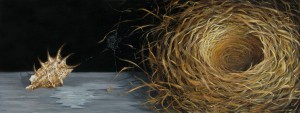
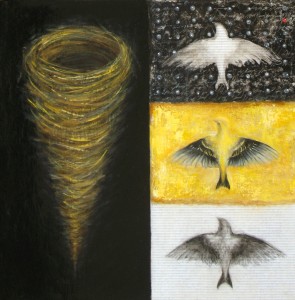
![4_Bridge [Notes on the State of Virginia series]](http://shenandoahliterary.org/632/files/2014/03/4_Bridge-Notes-on-the-State-of-Virginia-series-232x300.jpg)
![5_Lost and Found (Appomattox) [Notes on the State of Virginia series]](http://shenandoahliterary.org/632/files/2014/03/5_Lost-and-Found-Appomattox-Notes-on-the-State-of-Virginia-series-228x300.jpg)
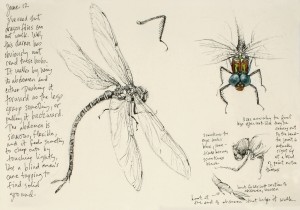
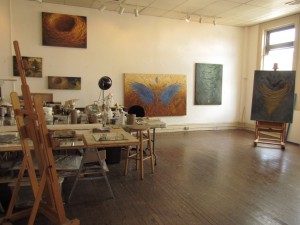
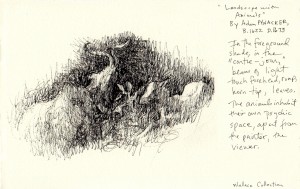
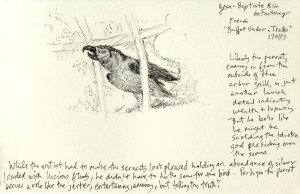

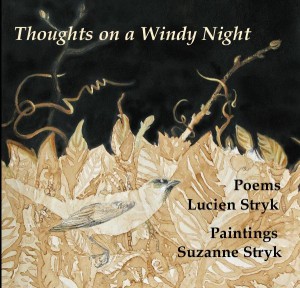
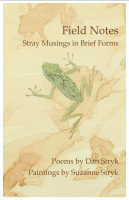
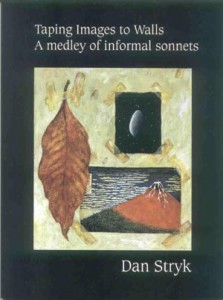
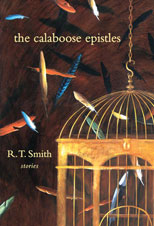
Pingback: 2014 - Suzanne Stryk